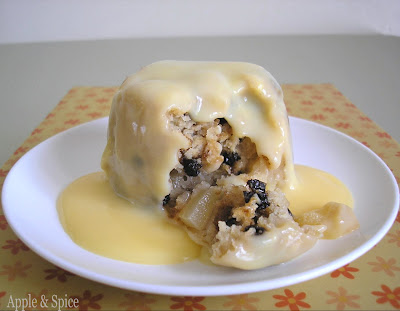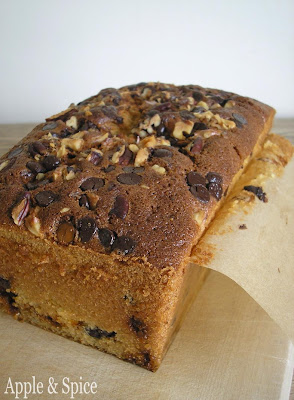Suet puddings are typically British and for many years have been a highly popular feature on many a households and restaurants menu. Unfortunately they have become less popular in recent years, but they do seem to be starting to creep back onto menus as a revival of old British classic dishes are starting to become fashionable again. Suet puddings in the UK can be sweet or savory. Savory suet puddings often involve the suet being made into a type of pastry which is used to line a pudding basin before being filled with a meaty stew and steamed, for example, the very English Steak & Kidney Pudding. A sweet version can also be made in this way, such as a Sussex Pond Pudding, which involves a whole lemon being backed inside a suet crust. However, more commonly sweet suet puddings resemble steamed sponge puddings, where the suet replaces the butter in the recipe and the puddings are steamed in a pudding basin.
Suet comes in the form of little white pellets and is similar to lard – but for Vegetarians, such as myself, there is now a vegetable fat alternative, much more appealing, particularly in a sweet pudding. Suet melts at very low temperatures meaning it easily melts into the puddings resulting in a very moist textured sponge, even more so when the pudding is traditionally steamed rather than baked. They are naturally denser than a normal sponge pudding – but we Brits are rather fond of our stodgy puddings, particularly when topped off with lashings of custard!
You must remember that suet puddings have been around for over a hundred years and in times of no central heating people often relied on foods such as this to see them through cold hard winters. Suet is also a cheap ingredient and even the sweet puddings contain no butter, eggs and very little sugar meaning they made cheap meals on which to feed your family, so before you go turning your noses up, stop and think about their history!
For this months Daring Bakers challenge we were allowed to chose between sweet or savory suet puddings and also what type of suet pudding to make. I was delighted by this and unsurprisingly decided to go the sweet suet sponge route. I knew instantly what classic traditional British suet pudding I wanted to make – Spotted Dick!
Oy! You in the corner, stop sniggering! There is nothing to smirk over – Spotted Dick has been a great British classic pudding for well over a century! It’s been around long before any sexual connotations could be related to it – it was a purer and more innocent age. For anyone who doesn’t know, Spotted Dick is a steamed suet pudding containing currants and a little spice, served hot and always religiously accompanied by lashings of custard. ‘Spotted’ refers to the currants which are studded throughout the light coloured sponge and ‘Dick’ is through to be derived from the word for dough. The first documented recording of Spotted Dick appeared in the recipe book The Modern Housewife, dating back to 1850! So you see it really is part of our heritage and something your granny and generations before her have undoubtedly been tucking into.
In the last 10 years the name Spotted Dick has come under scrutiny due to childish and immature people finding its name highly embarrassing, childishly humorous or even “impure” due to the sexual connotations the modern word has linked to the word ‘Dick.’ Rather than smile and brush the silly remarks aside, some companies have felt the need to change the name of our great British pud. From 2001 – 2009 various groups including Gloucestershire NHS Trust, Flintshire County Council, Tesco and Sainsbury’s have renamed Spotted Dick as Spotted Richard (as Dick can be short for Richard when referring to a persons name) or even demoted it completely and labeled it simply Sultana Sponge, which personally I think it outrageous!!! This is wrong on so many levels, not only does it make us appear ashamed of our heritage and loose the puddings very identity, but to call it Sultana Sponge makes it sound very drab and ordinary – plus it should contain currants not sultanas! Thankfully thousands of other people agreed that this was political correctness gone made and most puddings have now been restored to their rightful titles. We should be proud and protective of our puddings and food heritage, not bow to the occasional immature remark. Ok, rant and history lesson over – onto the actual pudding!
The puddings were incredibly quick and easy to put together. All that’s required is a bowl and a wooden spoon and in a matter of minutes your puds are ready for the steamer. The recipe I used came from an old Waitrose Food Illustrated magazine and was one of the most authentic ones I could find – most of the modern recipes I found didn’t even use suet. This recipe has been updated slightly as it also includes a little diced Bramley apple – but as this is a very traditional English ingredient I was happy to use it. The thing I liked about the recipe was how it didn’t use any butter or eggs and very little sugar – these used to be very expensive ingredients and so were used sparingly. The pudding gets most of its sweetness from the currants and uses milk to mix the pudding together. A little lemon zest and mixed spice are added for flavour but it’s a remarkably simple pudding considering it tastes so good.
I decided to make my puddings in individual pudding moulds rather than a large basin for ease of serving. They puddings are placed into a shallow pan of simmering water and left to steam for 1½ - 2hours and then they are done. Simply turn them out, douse in liberal amounts of thick custard and enjoy a taste of English history. Very moist and tender, lightly sweet with little bursts of chewy fruitiness in every bite. They are quite dense and filling, but no more than bread pudding and they should be light enough not to feel like a brick in your stomach! Always enjoy piping hot with pools of creamy custard. Apologies if anyone thinks I have been getting overly passionate about a pudding, but I think it’s important not to forget our old fashioned puddings and cooking techniques. Long live Spotted Dick I say – a delicious slice of our traditional English heritage – a pud to be proud of.
P.S. Make it next time your grandmother comes for a visit – She’ll love it! Click to see how my fellow Daring Bakers dealt with their suet puddings.
Steamed Spotted Dick with Bramley Apple
(Recipe courtesy of Waitrose)
Ingredients
175g plain flour
1 tsp baking powder
½ tsp mixed spice
75g vegetable suet
50g light brown sugar
75g currants
1 small Bramley apple
½ lemon, zest only
150ml milk
To Serve
Lashing of custard
Method
Place a large pan filled with 1 inch of water on the hob and bring to a simmer.
Meanwhile, sift the flour, baking powder and mixed spice into a bowl. Stir in the currants, suet and sugar. Peel, core and finely dice the Bramley apple. Add to the mix along with the grated zest of ½ lemon.
Pour over the milk and use a wooden spoon to mix it all into a thick lumpy batter.
Divide the mix between 6 individual pudding basins or 1 large 1.2litre basin.
Cover the top of each pudding with a layer of greaseproof paper and cover tightly with foil.
Place the puddings into the pan of simmering water, ensuring the water does not come more than half way up the sides of the basins. Cover with a lid and leave to gently simmer for 1½ hours for individual puddings, or 2½ hours for a large one.
Remove from the pan and peel off the foil and greaseproof paper (they will be moist and a little sticky to touch).
Run a knife around the edge of the puddings and invert out into a bowl.
Serve immediately with lashings of hot custard.
Makes 6 individual or 1 large Spotted Dick
Any leftover puddings can be reheated for a few seconds in the microwave the following day.




















































